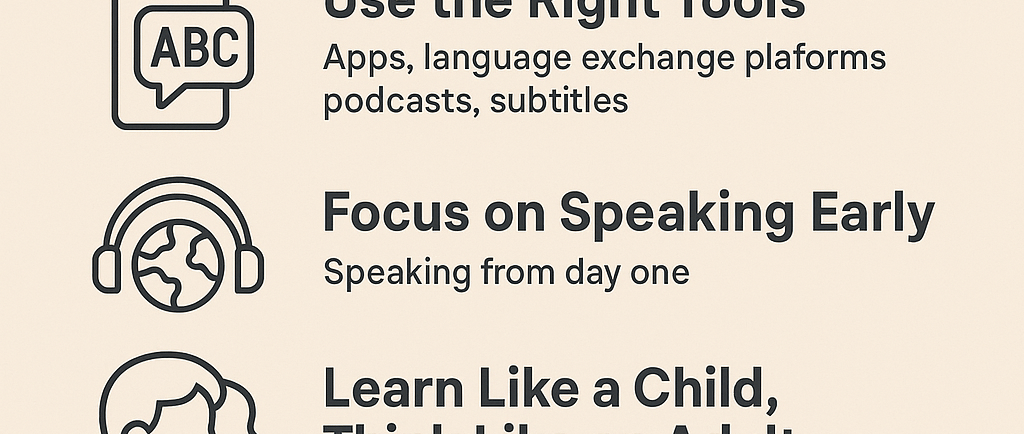How to Learn Languages Like a Pro: A 500-Word Guide


Learning a new language can be one of the most rewarding skills you’ll ever acquire. Whether you’re preparing for travel, expanding career opportunities, or connecting with new cultures, becoming proficient in another language sharpens your mind and enriches your perspective. Here’s a practical guide to learning languages like a pro.
1.Set Clear, Measurable Goals
Professionals don’t dive in blindly—they define what success looks like. Start by setting SMART goals (Specific, Measurable, Achievable, Relevant, Time-bound). Instead of saying “I want to learn French,” say “I want to hold a 10-minute conversation in French in 3 months.”
Break down your goals into micro-goals:
Learn 20 new words a day.
Watch one short video daily.
Practice speaking with a native weekly.
2.Use the Right Tools
The modern language learner has a wide array of tools at their disposal:
Apps like Duolingo, Memrise, Anki, or Babbel for vocabulary and grammar.
Language exchange platforms like Tandem or HelloTalk to practice with native speakers.
Podcasts and YouTube channels for immersive, real-world listening.
Subtitled content: Watch movies and series with subtitles in the target language to train your ear and learn contextually.
Use spaced repetition techniques through flashcard apps to retain vocabulary efficiently.
3.Immerse Yourself Daily
Consistency is key. Even 15–30 minutes of daily exposure is more powerful than one long session per week. Try:
Changing your phone or social media language.
Labeling objects in your home.
Listening to music or radio in the target language while commuting.
Pro learners create a language bubble—a space where they live, think, and even dream in the new language.
4.Focus on Speaking Early
Avoid the trap of passive learning. Language is for communication, so speak from day one—even if you make mistakes. Find a tutor, a speaking partner, or use AI language tutors.
The “mistake-fear” is the biggest block—pros embrace errors as feedback, not failure.
5.Learn Like a Child, Think Like an Adult
Children absorb languages through context, repetition, and play. Do the same:
Use visual aids and storytelling.
Mimic accents and intonation.
Repeat what you hear—out loud.
But also leverage your adult brain:
Understand grammar rules (but don’t obsess).
Recognize patterns and exceptions.
Learn phrases, not just words.
6.Track Progress and Stay Motivated
Keep a language journal. Track words learned, conversations held, and milestones reached. This keeps motivation high and shows how far you’ve come.
Reward yourself—watch a movie without subtitles, write a blog post in the new language, or speak confidently to a native speaker.
Final Tip:
The secret pros know? Language learning is not a talent—it’s a system. Anyone can become fluent with the right mindset, tools, and discipline. Make it part of your lifestyle, and fluency will follow.
Start today. One word, one sentence, one conversation at a time.
